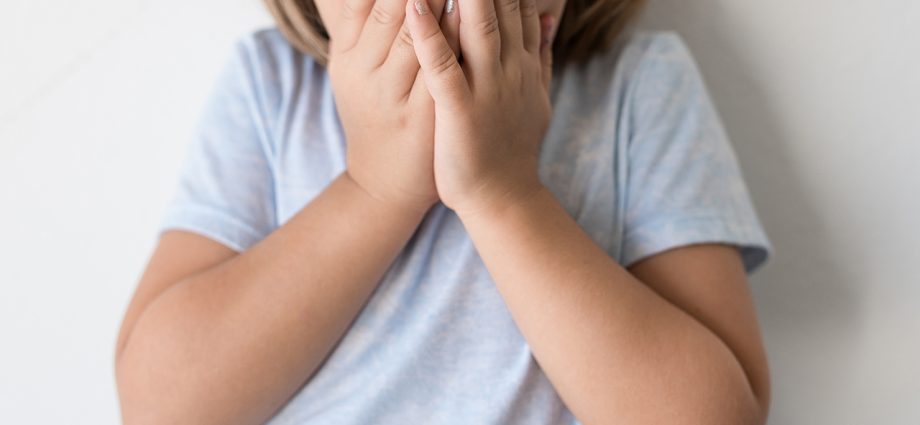Nyob rau hauv txoj kab nrog nws lub luag haujlwm, Pawg Thawj Saib Xyuas Haujlwm ntawm MedTvoiLokony ua txhua yam los muab cov ntsiab lus kho mob txhim khu kev qha txhawb nqa los ntawm kev paub txog kev tshawb fawb tshiab. Tus chij ntxiv "Cov Ntsiab Lus Tshawb Fawb" qhia tias tsab xov xwm tau raug tshuaj xyuas los ntawm lossis sau ncaj qha los ntawm tus kws kho mob. Qhov kev pov thawj ob kauj ruam no: tus kws sau ntawv kho mob thiab kws kho mob tso cai rau peb muab cov ntsiab lus zoo tshaj plaws raws li kev paub txog kev kho mob tam sim no.
Peb txoj kev mob siab rau hauv cheeb tsam no tau txais txiaj ntsig zoo, thiab lwm yam, los ntawm Lub Koom Haum ntawm Cov Neeg Sau Xov Xwm rau Kev Noj Qab Haus Huv, uas tau muab khoom plig rau Pawg Thawj Coj ntawm MedTvoiLokony nrog lub npe qhuas ntawm Tus Kws Qhia Ntawv Zoo.
Stuttering XNUMX-year-old – developmental disfluency of speech
The speaking process consists of several extremely difficult processes that must be closely coordinated with each other. In order for the sentence we say to sound correct, the appropriate vocabulary and grammar must be selected.
But it is not everything. A beautiful utterance is also the correct technique of speaking, i.e. a deep breath, the beginning of speaking coordinated with the exhalation phase, properly positioned vocal cords and an efficient articulation apparatus (soft palate, tongue, teeth, lips) enabling proper phonation and sound of sounds. In adults, speaking is largely automated. When we speak, we don’t think how we breathe, how we arrange our lips and tongue to express specific sounds. But for a child this complicated process is quite a challenge.
A preschool child is just learning to control all these processes. New sounds appear all the time in the development of speech (sz, ż, cz, dż, r) over which he has to control and be able to use them in the right words, he also learns new words and expressions all the time, learns new grammatical forms. There is also a crowd of external stimuli. Children look at the world extremely emotionally and the number of new problems they have to deal with is huge (kindergarten, new friends, a new brother or sister who greedily attract the attention of their parents, etc.). A great tangle of thoughts arises in a small head that needs to be expressed. And how to do it when the language is not listening to the end, the breath does what it wants and the words are missing? Therefore, in our little one’s speech, numerous disfluencies begin to appear more and more often. The child repeats sounds, syllables, sometimes words or even whole parts of a sentence. Voices can be dragged on, which gives the child time to think about the next part of the speech. There may also be corrections (so-called revisions) concerning the grammatical part of a sentence.
If this disfluency is not accompanied by additional contractions or facial movements, it is most often diagnosed as developmental speech disfluency. It usually occurs in children between the ages of 5 and 7 and is the only one of the speech disorders that passes with age, along with the improvement of language skills.
Developmental speech disfluency is characterized by a disturbance in moving from one thought to the next, from one grammatical structure to another. It is often associated with a lack of coordination between the functioning of the respiratory, phonatory and articulation systems, or it is the result of speaking too quickly and not following your thoughts. The child, speaking fluently, is not aware of this fact, does not feel any discomfort associated with it and it does not make him reluctant to speak.
In the case of developmental speech disfluency, no special speech therapy therapies are used. It is important not to make your child aware of how he or she talks, but to talk to him slower and to give him time to finish his speech calmly.
However, if a child is diagnosed with speech disfluency with a frequency greater than 10% of speech, and there is tension during speaking, cramps or compassion, the so-called “Early childhood stuttering”. This is where the awareness of disfluent speech appears and the reluctance to speak is often associated with it.
There are many possible causes of “early childhood stuttering”. It may be the result of genetic predisposition, perinatal damage, malfunctioning speech apparatus, brain damage, certain childhood diseases or purely psychological factors: low self-esteem, being forced to talk, shyness, fear, lack of acceptance, etc.
The therapy of “early childhood stuttering”, as opposed to developmental speech disfluency, should be carried out under the supervision of a speech therapist or at special rehabilitation camps.
Cov ntawv nyeem: mgr Izabela Wiatrowska, kws kho hais lus thiab mgr Magdalena Jęksa - Wojciechowska, tus kws kho hais lus, ABC ntawm kev hais kom raug










